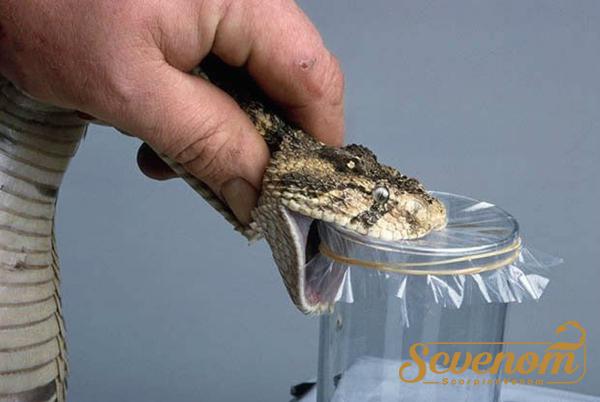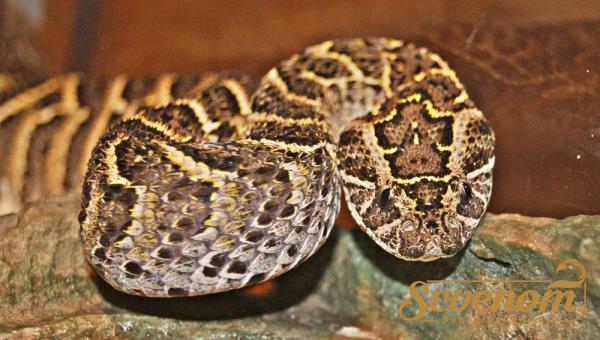Snake venom is a highly modified saliva containing zootoxins, which facilitates the immobilization and digestion of prey and facilitates defense against threats. It is injected by unique teeth during a bite, and some species can also spit out their venom. The glands that secrete zootoxins are a modification of the parotid salivary glands found in other vertebrates and are usually located on both sides of the head, under and behind the eye, and encapsulated in a muscular sheath. The glands have large alveoli, in which the poison synthesized is stored before being transported to the base of the canal or tubular teeth, in which a channel is expelled. For more information on snake venom price, visit our site.

How does snake venom help humans?
 Poisons contain more than 20 different compounds, mostly proteins and polypeptides. A complex mixture of proteins, enzymes and various other substances with toxic and lethal properties serves to immobilize prey, enzymes play an important role in the digestion of prey, and various other substances are responsible for significant but not lethal biological effects. Some of the proteins in snake venom have very specific effects on a variety of biological functions, including blood coagulation, regulation of blood pressure, and transmission of nerve or muscle impulses, and have been developed for use as pharmacological or diagnostic tools and even useful drugs. Proteins make up 90-95% of the venom’s dry weight and are responsible for almost all of its biological effects.
Poisons contain more than 20 different compounds, mostly proteins and polypeptides. A complex mixture of proteins, enzymes and various other substances with toxic and lethal properties serves to immobilize prey, enzymes play an important role in the digestion of prey, and various other substances are responsible for significant but not lethal biological effects. Some of the proteins in snake venom have very specific effects on a variety of biological functions, including blood coagulation, regulation of blood pressure, and transmission of nerve or muscle impulses, and have been developed for use as pharmacological or diagnostic tools and even useful drugs. Proteins make up 90-95% of the venom’s dry weight and are responsible for almost all of its biological effects.
Among the hundreds or even thousands of proteins found in the venom are toxins, especially neurotoxins, non-toxic proteins (which also have pharmacological properties) and many enzymes, especially hydrolytic ones. Enzymes (molecular weight 13-150 KDa) make up 80-90% of viperidine and 25-70% of elapid poisons, including digestive hydrolases, L-amino acid oxidase, phospholipases, thrombin-like pro-coagulant and kallikrein-like serine . proteases and metalloproteinases (hemorrhages) that damage the vascular endothelium. It contains polypeptide toxins (molecular weight 5-10 KDa), cytotoxins, cardiotoxins and postsynaptic neurotoxins (such as a-bungarotoxin and α-Cobratoxin) that bind to acetylcholine receptors in neuromuscular connections.
Low molecular weight (up to 1.5 KDa) compounds include metals, peptides, lipids, nucleosides, carbohydrates, amines and oligopeptides that inhibit angiotensin converting enzyme (ACE) and potentiating bradykinin (BPP). The interspecies and interspecies variation in the chemical composition of the venom is geographic and ontogenic. Phosphodiesterases specifically interfere with the prey’s heart system to lower blood pressure. Phospholipase A2 causes hemolysis by breaking down the phospholipid cell membranes of red blood cells. Amino acid oxidases and proteases are used for digestion.
Amino acid oxidase also triggers some other enzymes and is responsible for the yellow color of the venom of some species. Hyaluronidase increases tissue permeability to accelerate the absorption of other enzymes into tissues. Some snake venom carries fasciculins such as mambas (Dendroaspis), which inhibit cholinesterase to cause the prey to lose muscle control. For more information on snake venom medicine history visit our site.
Latest price of Snake venom in 2021
 Latest price of Snake venom in 2021 is associated with fluctuations and because it has many properties, it also attracts many customers and reaches the customer at a good price from our company. Therefore, you can visit our site for more information about beneficial uses of snake venom.
Latest price of Snake venom in 2021 is associated with fluctuations and because it has many properties, it also attracts many customers and reaches the customer at a good price from our company. Therefore, you can visit our site for more information about beneficial uses of snake venom.










Your comment submitted.